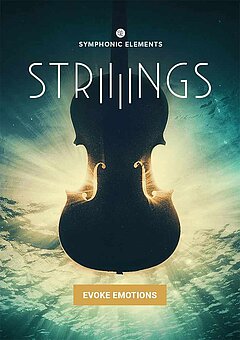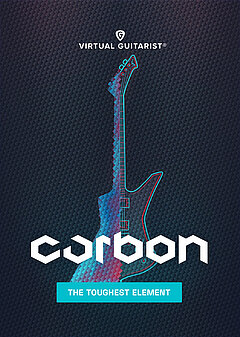How to Write a Film Score
A dive into the creative process behind composing for a short or feature film, finding your first clients, and matching the drama on screen
DECEMBER 5TH, 2020
We’re going to focus mainly on the creative side of film scoring, but let’s go over the fundamentals so you can get up and running as quickly as possible.
How to get into the film industry
While the topic of step by step networking in the film industry could easily get its own article, we’ll cover a few essentials here so you can start practicing.
If you’ve never written for film before, don’t be afraid to take on a couple projects for free; that is, provided you’re allowed to use them in your demo reel, they show off your strengths as a film composer, and you retain the rights to your music. It’s normal for a film studio to own the music rights in a paid work for hire agreement, but if you’re not getting paid (or the film has a low budget), you should at least be in a position to leverage and sell your music independently.
This process takes time, and that’s okay! Keep reaching out to filmmakers and expanding your network in a respectful manner, and use every project you do to showcase your abilities and secure more work. It’s perfectly acceptable to show your non-film music to potential clients as well; use everything possible that demonstrates your musical ability, particularly if you know it’s a style they’re interested in using for their film.
Here’s an article with great film industry networking tips -- there’s a section entirely dedicated to online networking that’s ideal while many of us are still working entirely from home.
Starting from ground zero
Most DAWs have the ability to import a movie and play it in time with the session playhead, and it’s typically just a matter of dragging a movie file into the session and positioning it at the appropriate starting point. Depending on the DAW, it might ask you to choose a frame rate for the movie, but if it auto-detects it you can start writing straight away.
Ideally, your client has given you detailed notes on the mood, dramatic arc, characters, style, and creative vision they’re looking for. If at all possible, ask them to send you a list of songs they want you to emulate. It’s much easier to know what they want this way, and a reference list will help keep you on track so long as you continue to reference it throughout the project.
A word of caution: be clear with your client that the end result will not sound exactly like the references. The scenes you’re writing for will undoubtedly have unique aspects that require you to do things a little differently; after all, no two films are alike (not to mention the fact that the reference songs may be live orchestral recordings or mixed in a world-famous studio!). Setting expectations early will save you a ton of time and headache later, but remember to still be tactful and ensure they know they made the right decision by hiring you.
Assuming you’ve got the basics in order, it’s time to record and let the scene play!
How do I get started?
It’s easy to sit and stare at an empty DAW session, and this tendency is even more difficult to overcome with film scoring. You’re trying to find the perfect music to go with the on screen action, and conjuring that out of nothing can seem nothing short of impossible.
With that in mind, simply hit record, and as the scene’s running…
Play something. Anything that you feel might fit.
Your natural instinct will be to hold back until inspiration strikes, but you’ll be far less stressed if you simply get something into your session. A poor take with lots of room for improvement is far better than no take at all, because at least now you have the choice to either scrap it or make it better. Keep recording, re-recording and making adjustments until you have something you’re “sort of okay with” (notice we didn’t say “until you get it perfect!”).
A speaker named Seth Godin dives into this idea in this article. We need to start creating and be happy with imperfect work, otherwise we never create anything. The faster you create more, the faster you create scores that could be better, the sooner you can improve them. Your clients, viewers and listeners want what you have to offer, regardless of whether it’s the single best thing you’ve ever done.
Keep re-evaluating
Once your music works with the video, flesh out the idea with more instruments and extend it out to 20 or 30 seconds. Less than that and you may not have a clear idea of whether your music fits the scene, but more and you’ll likely end up wasting large chunks of work. Refer back to your musical references and mood guidelines and ask yourself honestly, “Does what I just wrote accomplish the task I need it to?”
If yes, write another 20-30 seconds and re-evaluate. Once you complete a scene, watch and listen all the way through and see if the music improves the scene. If it does, now it’s time to go back and improve it. Again, don’t strive for ‘perfect’; focus on creating something ‘professional.’ Create a rough mix that’s about 80% of the way there, then send it off to the client and get their thoughts. Keep iterating based on their recommendations, and once they’re happy, move onto the next scene with their blessing. The time will come to get it the last 20% of the way there, but clarify with your client that you’ll fully polish the cue after the scene is locked, for reasons you’re about to see.
Bumps in the road
If you’ve scored films or shorts in the past, you know that every scene you work on has the potential to change in the editing process. You’ll undoubtedly have to re-do work from time to time, and that’s unfortunately just part of the process. You’re typically going to receive a scene before it’s “locked,” a term meaning there will be no further edits to the scene’s timing and structure. If the filmmakers waited until everything was locked, you would have virtually no time to work on the score before the film’s release. This is a perfectly normal part of the process, and is why you never want to finish a cue 100% before you get confirmation that there will be no further changes to the timing of the scene.
Here’s an excellent vlog about what it’s like to work as a composer on a film team:
That said, it’s important to deliver professional work every single time; professional and polished are two very different things. The client needs to hear something close to finished, because they won’t fill in the missing pieces in their minds; that’s your job. Just make sure you’re not stuck doing hours of work that are certain to never see the light of day!
Film scores vs. trailer music
In the film industry, films and trailers are typically never scored by the same composer. Many studios hire companies that specialize in churning out trailer music, sometimes in less than 24 hours. This is something worth clarifying with the client at the beginning of the project.
If it’s a smaller project with a limited budget, it’s unlikely they’ll hire a specialized company, and so you’ll likely be tasked with scoring the trailer as well. The trailer is a very different task, as it must capture as much dramatic energy as possible in a very short amount of time. Your transitions will be faster, and you’ll likely have to oversell the drama a bit -- which can be an incredibly fun challenge in its own right.
In short, trailer writing generally has to be tighter, more dramatic, and give more attention to the pacing of the action on screen. Oh, and be sure to add lots of epic sound effects if appropriate -- your clients will love you for it!
Output created a great demo with Confidential Music about their process for writing trailer music:
Writing for an orchestra
The origin of film music was the orchestra, largely because the biggest film composers in the early days of Hollywood were concert composers, Jewish immigrants that settled in the United States during World War II. Their legacy has persisted, and in order to be a versatile film composer you’ll want to become intimately familiar with writing for strings. That said, you don’t need to spend years studying the orchestra to add a full string section to your music.
UJAM just released a new strings VST, STRIIIINGS, that lets you easily play a wide variety of phrases that previously only existed in Hans Zimmer’s private collection of orchestral recordings built up over a decade. If you want an inside look on how to write like Hans, this is the key.
Many string sample libraries retail at a much higher price and require you to do a lot of legwork to get them to sound natural. But if you’re looking for quick access to string phrases that help you build a massive-sounding orchestral or hybrid film score, STRIIIINGS is the way to go.
Wrap-up
Film scoring can be far more challenging than producing songs, because you receive very specific constraints based on what your client is looking for. That said, film scoring is a collaborative effort, and you’re never truly starting from a blank slate when someone gives you stylistic and functional instructions. If you enjoy working in a team, this may be the perfect career path for you.
If you’re concerned about the effect of the pandemic on scoring opportunities, remember that there are still a lot of animated features being produced -- and the game industry is going stronger than ever. Live action films are even beginning to make a comeback as studios isolate their filming sites and have increased access to testing. The opportunities are there if you take your time, are passionate, and continue to build your skills and portfolio. Good luck!
Stay up to date
Sign up and we’ll send you an e-mail with product news and helpful stuff every now and then. You may unsubscribe at any time.
Defy Limits
We develop software solutions that enable people to create, consume and interact with music.




